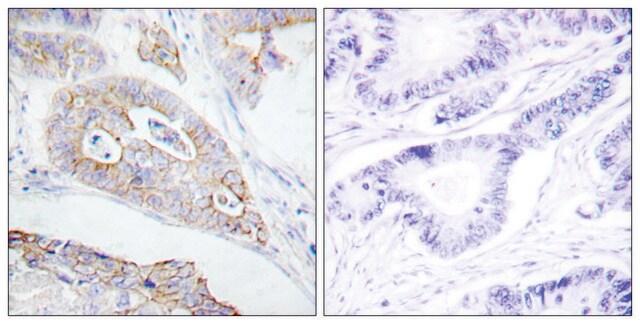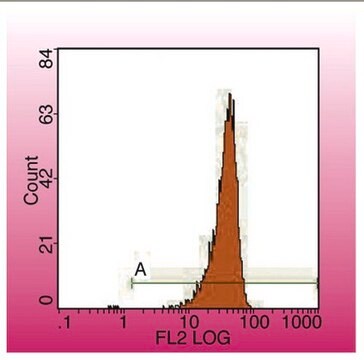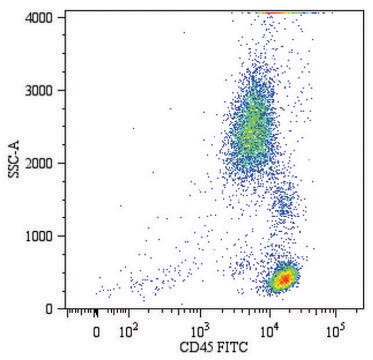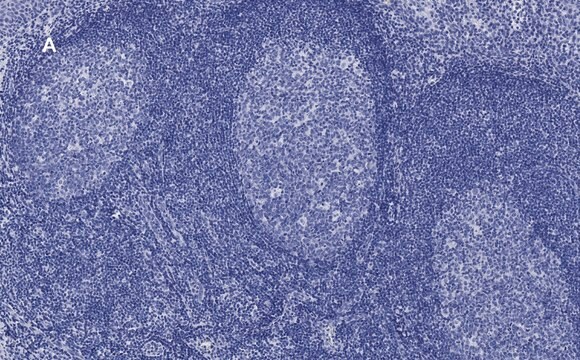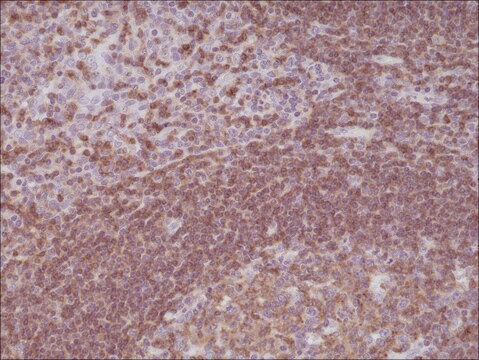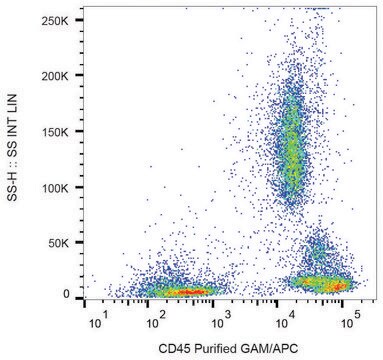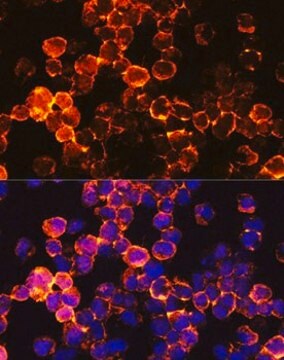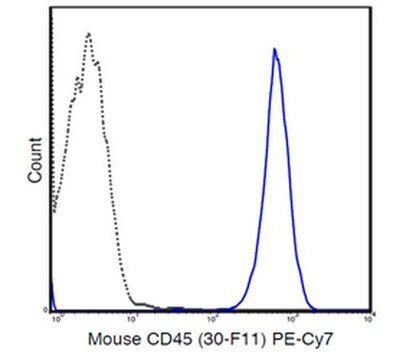05-1410-M
Anti-CD45 Antibody, clone F10-89-4
clone F10-89-4, from mouse, purified by affinity chromatography
Sinônimo(s):
CD45 antigen, Leukocyte common antigen precursor, SCID due to PTPRC deficiency, T200 glycoprotein, T200 leukocyte common antigen, Human homolog of severe combined immunodeficiency due to PTPRC deficiency, Leukocyte-common antigen, Protein tyrosine phosph
About This Item
Produtos recomendados
fonte biológica
mouse
Nível de qualidade
forma do anticorpo
affinity isolated antibody
tipo de produto de anticorpo
primary antibodies
clone
F10-89-4, monoclonal
purificado por
affinity chromatography
reatividade de espécies
mouse
reatividade da espécie (prevista por homologia)
human, rat
técnica(s)
flow cytometry: suitable
immunofluorescence: suitable
immunohistochemistry: suitable (paraffin)
immunoprecipitation (IP): suitable
western blot: suitable
Isotipo
IgG2a
nº de adesão NCBI
nº de adesão UniProt
modificação pós-traducional do alvo
unmodified
Informações sobre genes
human ... PTPRC(5788)
Descrição geral
Especificidade
The LCA comprises of at least 5 isoforms ranging from 180-220 kDa which are produced as a result of alternative splicing of exons A, B or C. CBL 124 recognizes epitopes common to
all of the isoforms.
Antigen distribution:
Thymocytes >95%
Granulocytes >95%
Monocytes >95%
B cells (CD20+) >95%
T cells (CD3+) >95%
NK cells (CD16+) >95%
Peripheral blood lymphocytes >95%
FUSION PARTNER: NS1 myeloma cell line
Imunogênio
Aplicação
Immunohistochemistry (paraffin): A previous lot of this antibody was used in the discrimination between malignant cells of haematopoietic origin and other malignancies in frozen tissue sections.
Immunoprecipitation: A previous lot of this antibody was used in studies of the leucocyte common antigen complex and its identification by the Western blotting technique.
Flow Cytometry: Studies of CD45 expression and the association with T-cell receptor signaling was performed using this antibody of previous lot.
Studies of the mechanism by which CD45 regulates B cell activation through protein tyrosine phospatases.
Optimal working dilutions must be determined by the end user.
Immunohistochemistry(paraffin): Representative testing from a previous lot.
Optimal Staining of CD45 Monoclonal Antibody: Tonsil
Signaling
Immunological Signaling
Qualidade
Western Blot Analysis: 1:500 dilution of this lot detected CD45 on 10 μg of Jurkat lysates
Descrição-alvo
Ligação
forma física
We recommend that each laboratory determine an optimum working titre for use in its particular application.
Armazenamento e estabilidade
Handling Recommendations: Upon first thaw, and prior to removing the cap, centrifuge the vial and gently mix the solution. Aliquot into microcentrifuge tubes and store at -20°C. Avoid repeated freeze/thaw cycles, which may damage IgG and affect product performance.
Nota de análise
Jurkat cell lysate
Outras notas
Exoneração de responsabilidade
Não está encontrando o produto certo?
Experimente o nosso Ferramenta de seleção de produtos.
Código de classe de armazenamento
12 - Non Combustible Liquids
Classe de risco de água (WGK)
WGK 2
Ponto de fulgor (°F)
Not applicable
Ponto de fulgor (°C)
Not applicable
Certificados de análise (COA)
Busque Certificados de análise (COA) digitando o Número do Lote do produto. Os números de lote e remessa podem ser encontrados no rótulo de um produto após a palavra “Lot” ou “Batch”.
Já possui este produto?
Encontre a documentação dos produtos que você adquiriu recentemente na biblioteca de documentos.
Nossa equipe de cientistas tem experiência em todas as áreas de pesquisa, incluindo Life Sciences, ciência de materiais, síntese química, cromatografia, química analítica e muitas outras.
Entre em contato com a assistência técnica